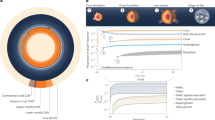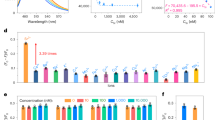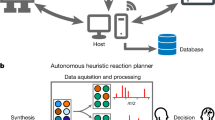Abstract
IT is generally required in radioactive tracer procedure when applied to biochemical problems that the stable and radioactive molecules or ions possess identical configurations. Only when the two isotopic atoms are supplied in the same chemical form can it be assumed that living tissues will absorb them in the proportions applied. In experiments carried out here with phosphorus-32, it was found that this requirement was not satisfied, and since no information is available on the selectivity of the plants to isotopic elements in different chemical forms, our data cannot be interpreted.
This is a preview of subscription content, access via your institution
Access options
Subscribe to this journal
Receive 51 print issues and online access
$199.00 per year
only $3.90 per issue
Buy this article
- Purchase on SpringerLink
- Instant access to full article PDF
Prices may be subject to local taxes which are calculated during checkout
Similar content being viewed by others
References
J. Amer. Chem. Soc., 62, 1930 (1940)
Nature, 134, 462 (1934)
Author information
Authors and Affiliations
Rights and permissions
About this article
Cite this article
THOMAS, W., NICHOLAS, D. Radioactive Phosphorus in Biochemical Research. Nature 163, 719 (1949). https://doi.org/10.1038/163719a0
Issue date:
DOI: https://doi.org/10.1038/163719a0
This article is cited by
-
über die Phosphatresorption beim Mycobacterium tuberculosis
Zeitschrift für Hygiene und Infektionskrankheiten (1953)
-
Radiation effects with radioactive phosphorus in barley and tomato grown in soil
Plant and Soil (1953)
-
Radiation Effects in Plant Nutrition Experiments with Phosphorus-32
Nature (1951)



